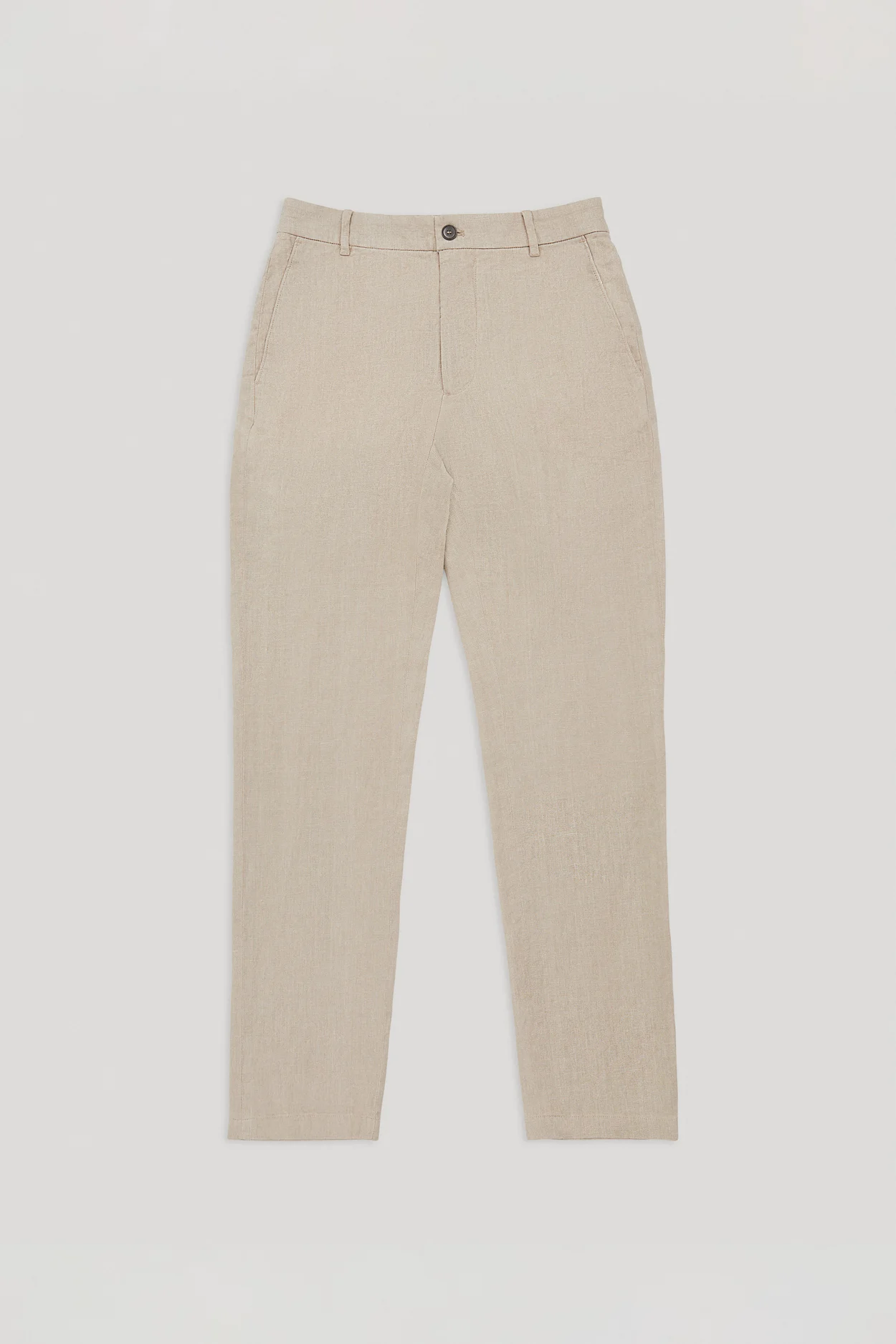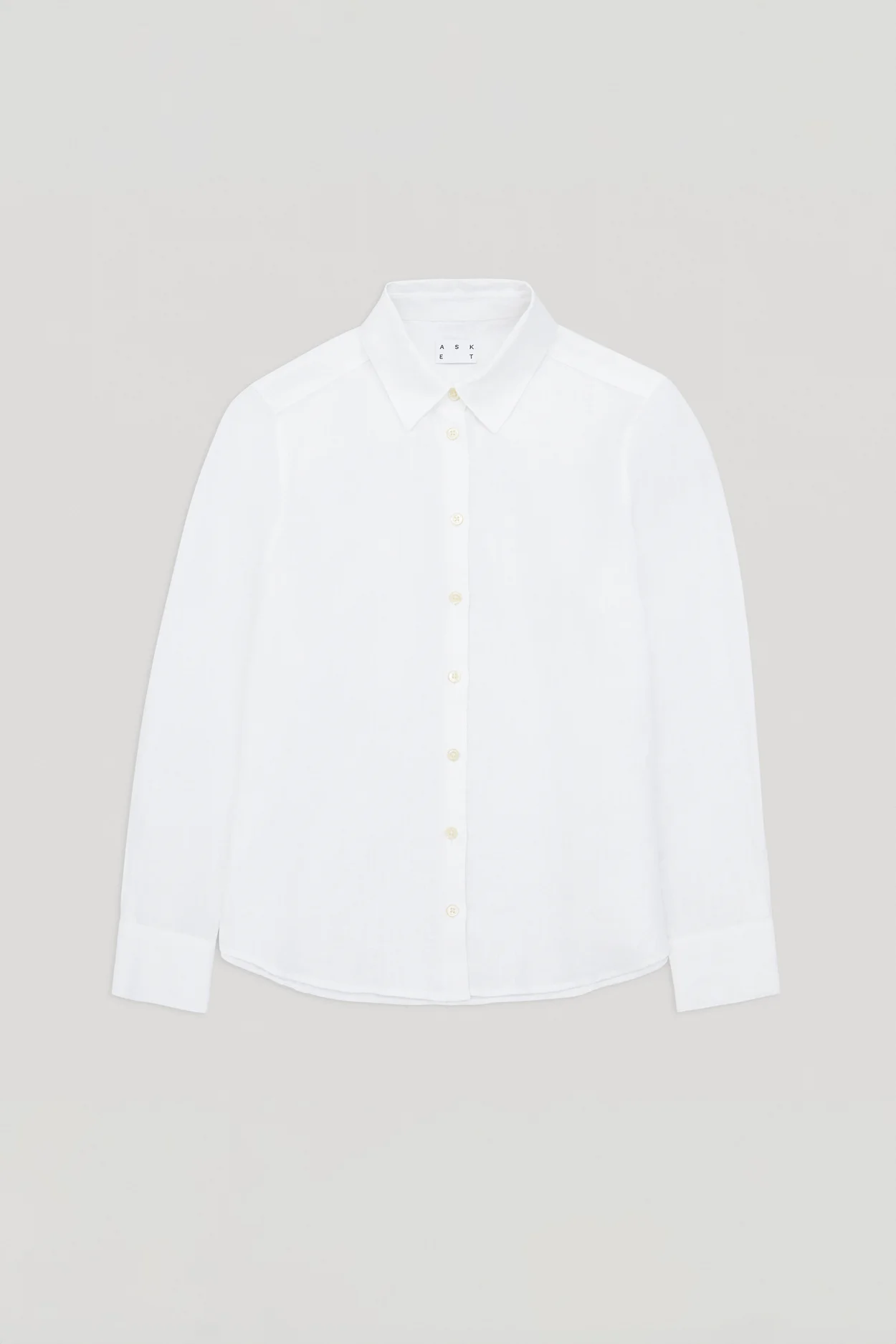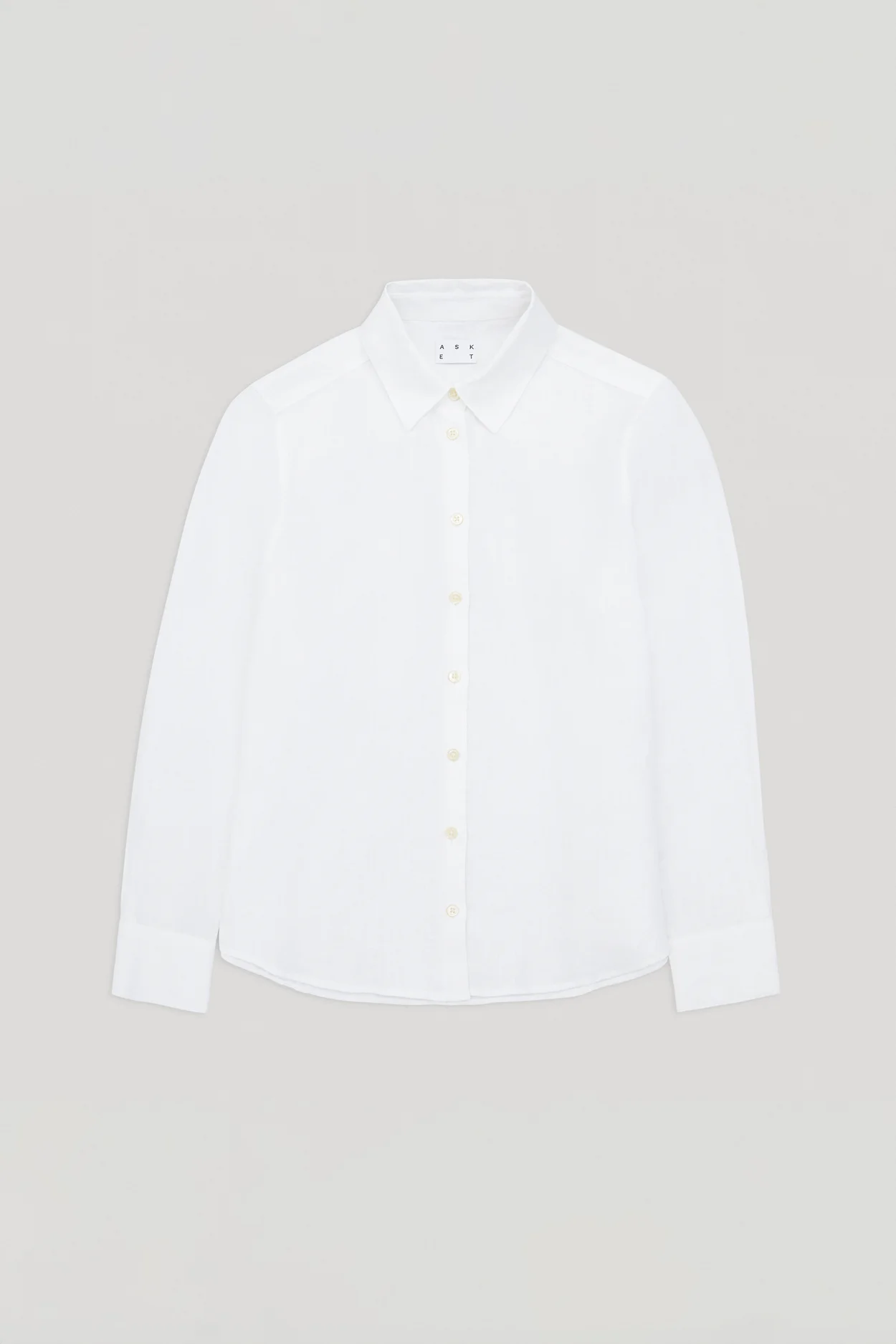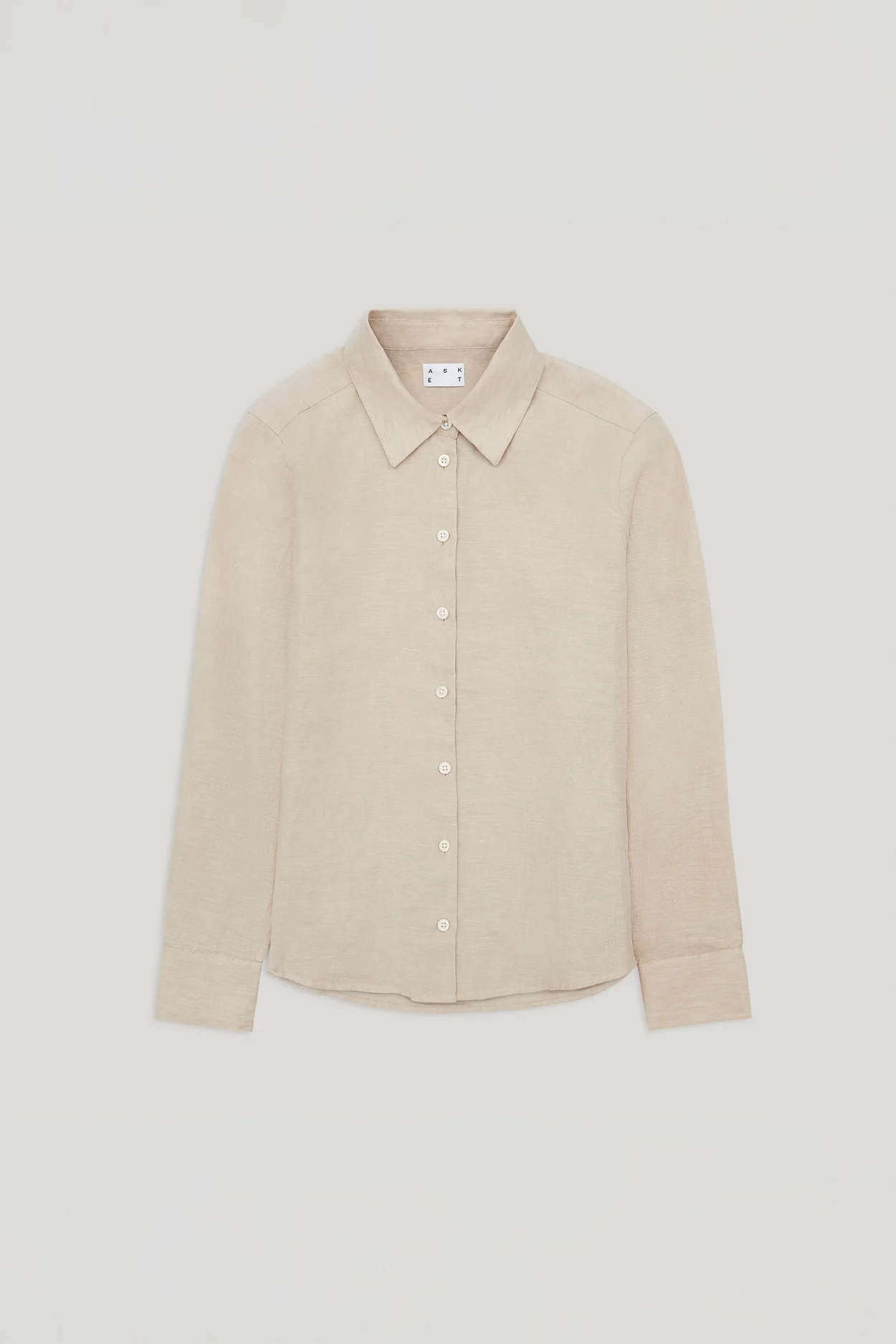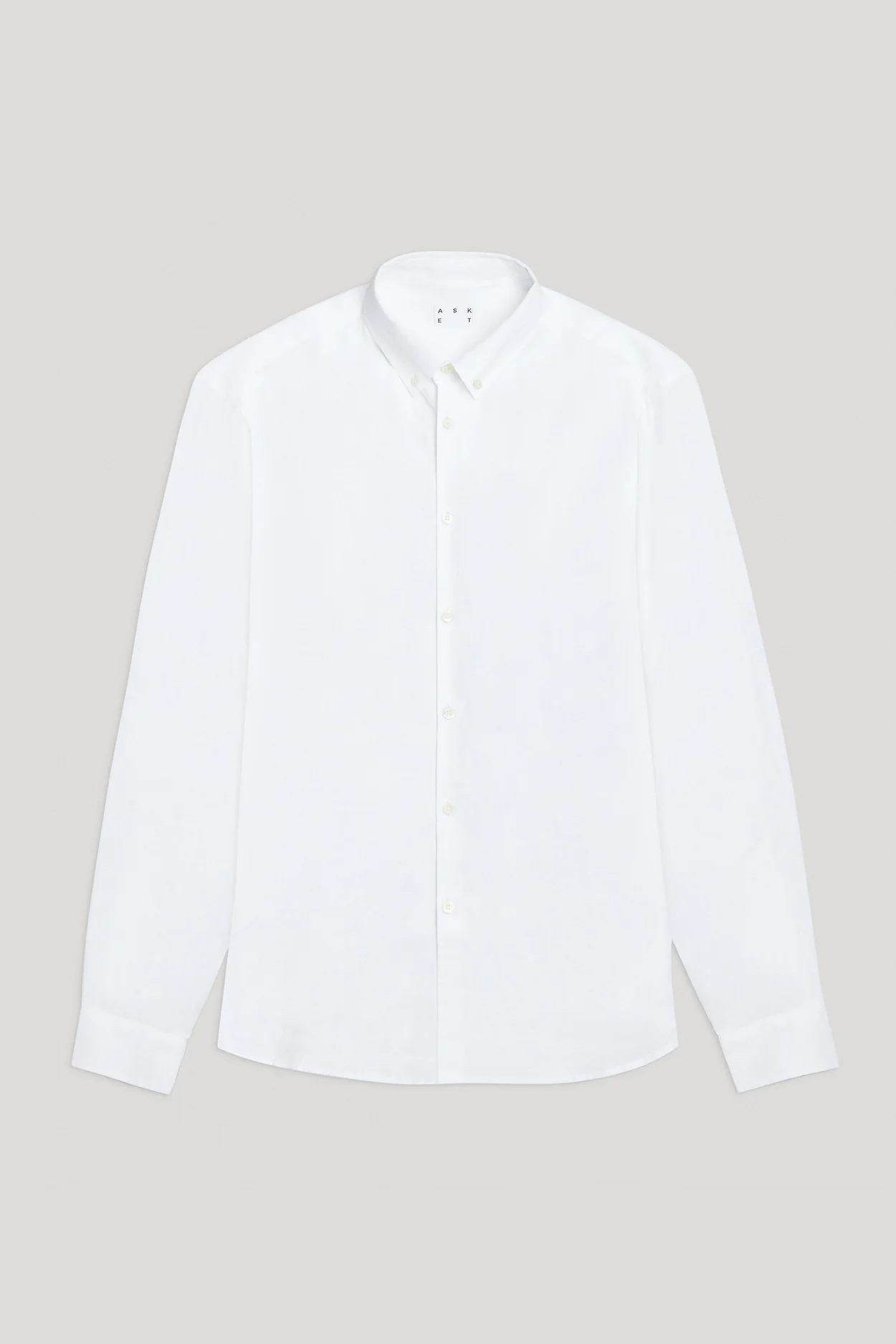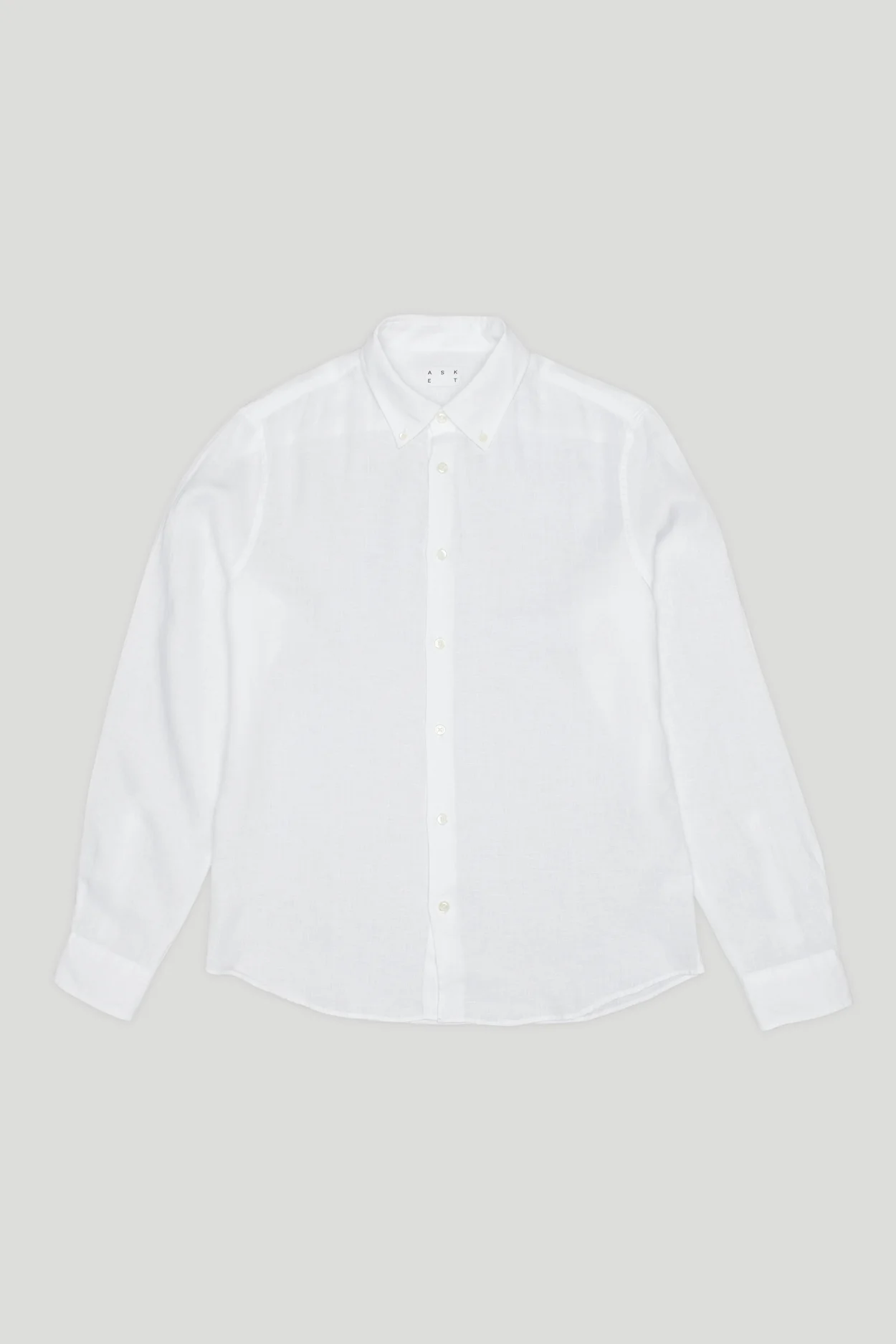Embracing Irregularities
Watch videoTo celebrate the launch of our new linen garments joining the permanent collection this spring, we visited our mills and factories in Portugal to better understand how they work with, and embrace linen's irregularities. The fabric of choice for balmier months, linen holds a special place in many wardrobes. Only getting better with consecutive summers as it creases and softens with exposure to sun, humidity and salty breezes. Yet despite its credentials, Linen is a material that requires incredible expertise during the production process in order to tease out its best properties. Watch the video above to learn more or head below to explore the production of linen.

The Environment
Linen is made from the fibers of the flax plant, which grows on a long stretch along the European mid-western coast, where the damp climate and sandy clay soils are ideal for farming flax. The growing period is short, only 100 days, in that time the environmental conditions impact the quantity, property and quality of the crop. No two harvests are alike.

The Fabric
The fibers are then spun and woven to create a textile that is airy and loose yet strong and apt to only get better with time. The fabric might also feature small bumps that occur at irregular intervals called ‘slubs’. These used to be considered faults, but today they are seen as part of linen fabrics and their aesthetic appeal.



The Shape
Lightweight, absorbent, and fast-drying linen is the quintessential choice for creating garments intended for the summer months. The thing with linen, is that it's at its best once it has been worn for a couple hours. As a natural fiber it refines as the creases of the day work their way into the material and the textile softens to your body over consecutive summers.

The Factories
Our linen garments are unique in that they’re almost made entirely within the EU, with the exception of the sewing thread and mother of pearl origin. Working with farms, fabric mills and garment factories that have a honed expertise of working with linen’s irregularities, from sourcing the pick of the crop to expertly embracing the fibers natural properties when weaving and cutting the material.
